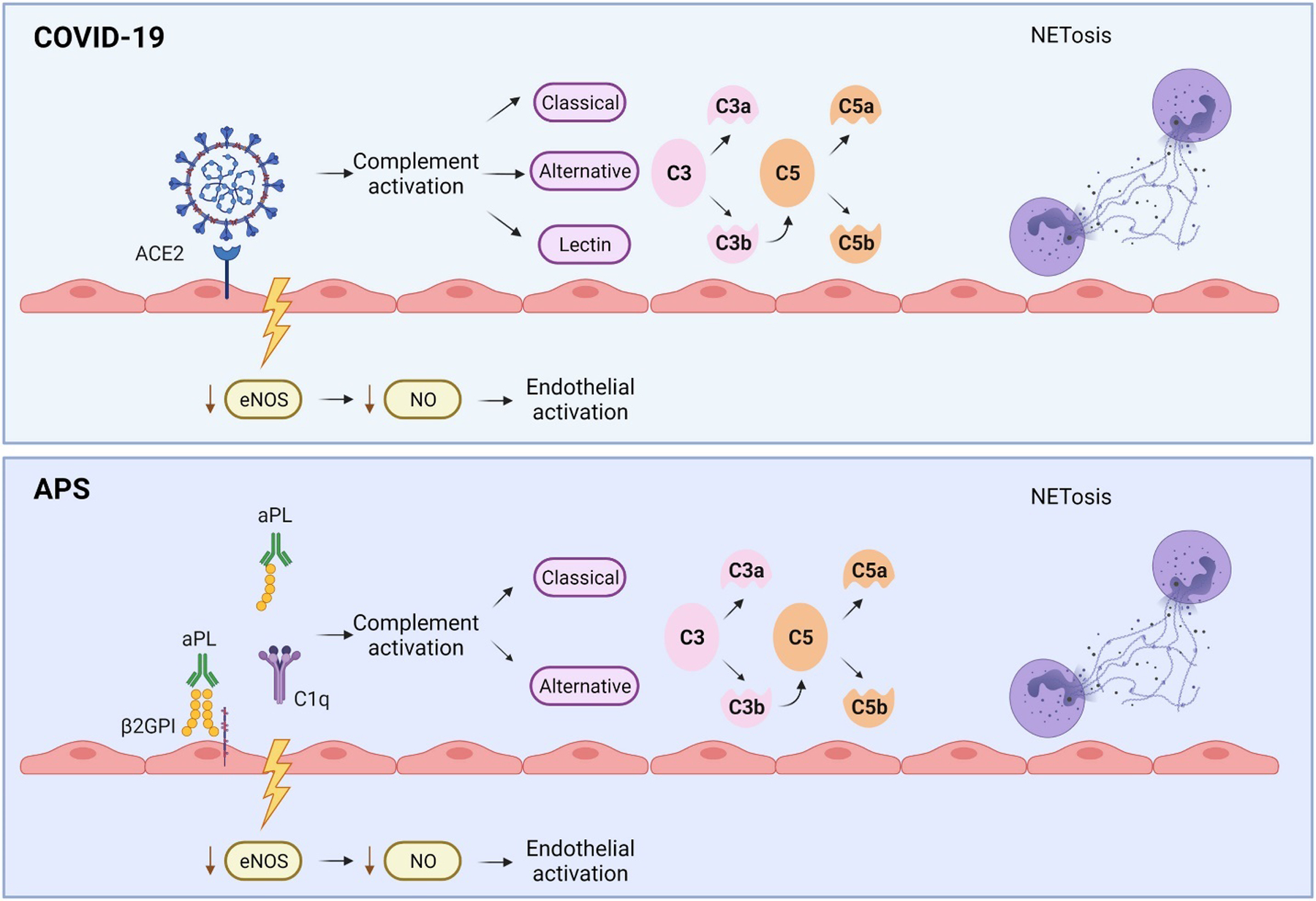Figure 1.

Common Mechanisms of Thrombosis Shared by Antiphospholipid Syndrome and COVID-19. SARS-CoV-2 enters cells by binding to angiotensin converting enzyme-2 (ACE-2) receptor, whereas in APS, endothelial injury is mediated through the exposure of endothelial cells to antiphospholipid antibodies (aPL). In both cases, inhibition of endothelial nitric oxide synthase (eNOS) production decreases production of nitric oxide (NO), an anti-inflammatory and vasodilatory agent, increasing susceptibility of the endothelium to injury. Complement activation plays a key role in both COVID-19 and CAPS. In COVID-19, unchecked inflammatory signals lead to the recruitment of neutrophils and excessive NETosis, resulting in microvascular occlusions, which have been also demonstrated in APS. Both COVID-19 and aPL induce proinflammatory and prothrombotic cytokines; a subgroup of both COVID-19 and APS patients may have cytokine storm, characterized by high levels of proinflammatory cytokines and chemokines.
